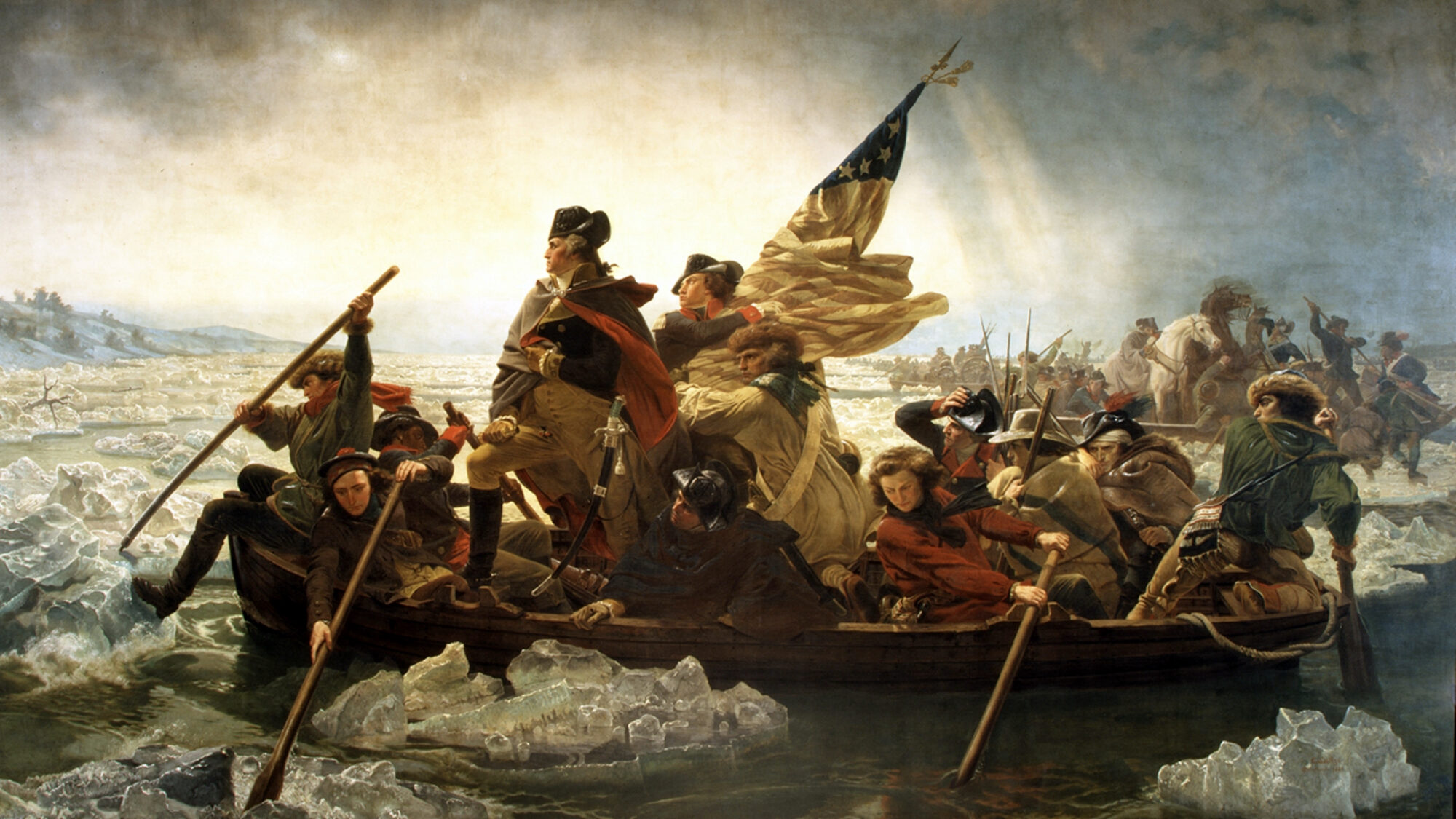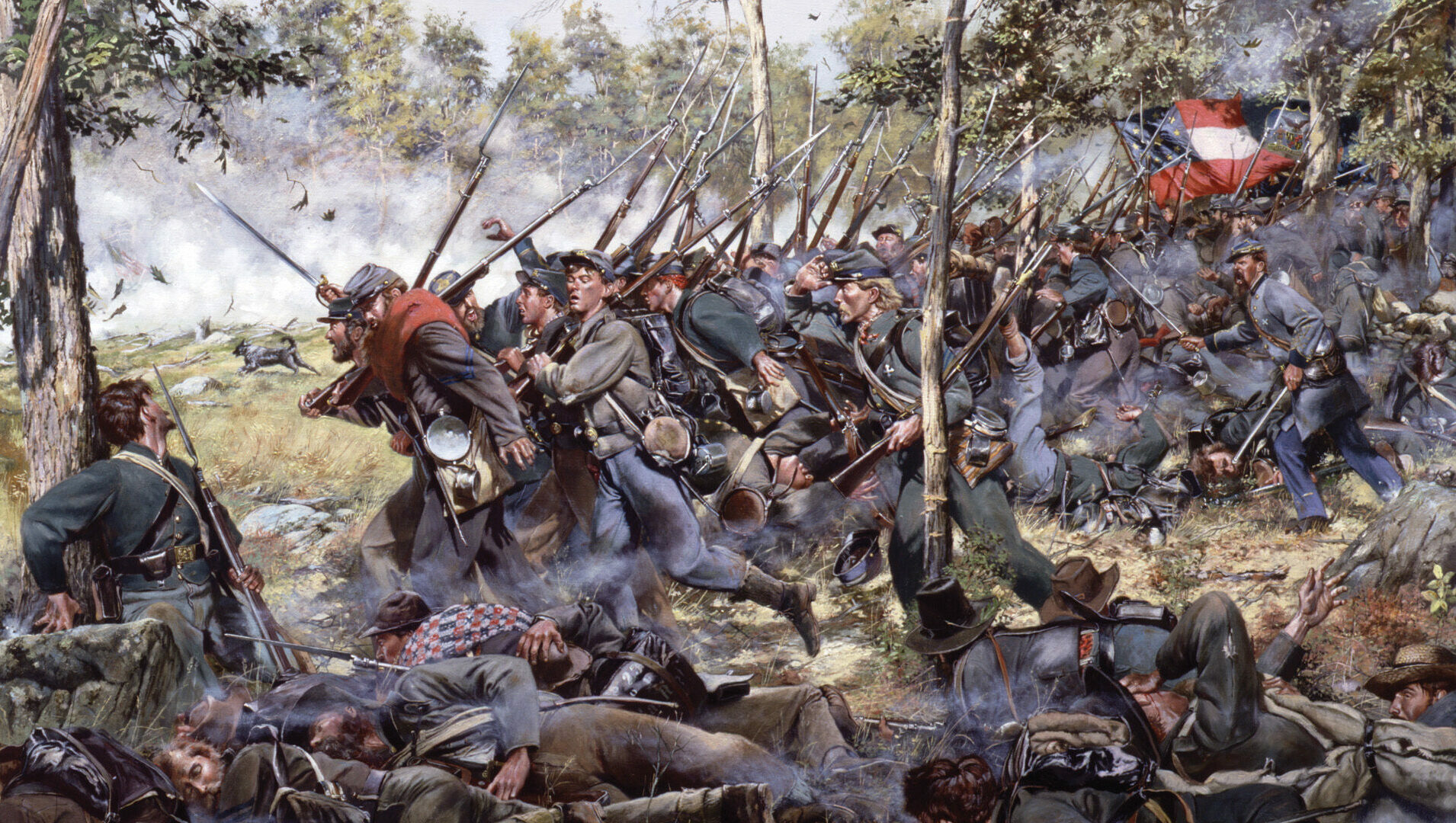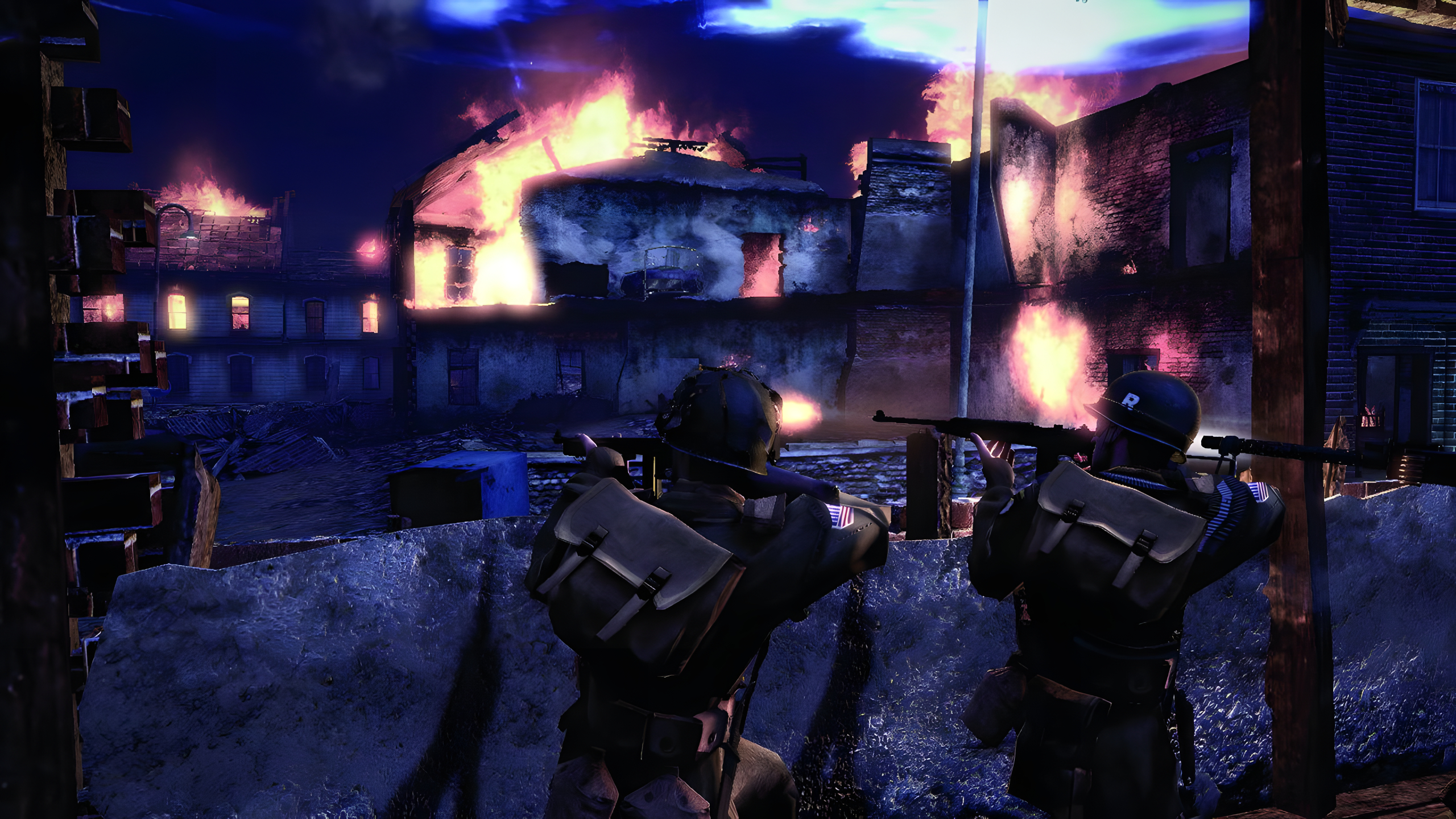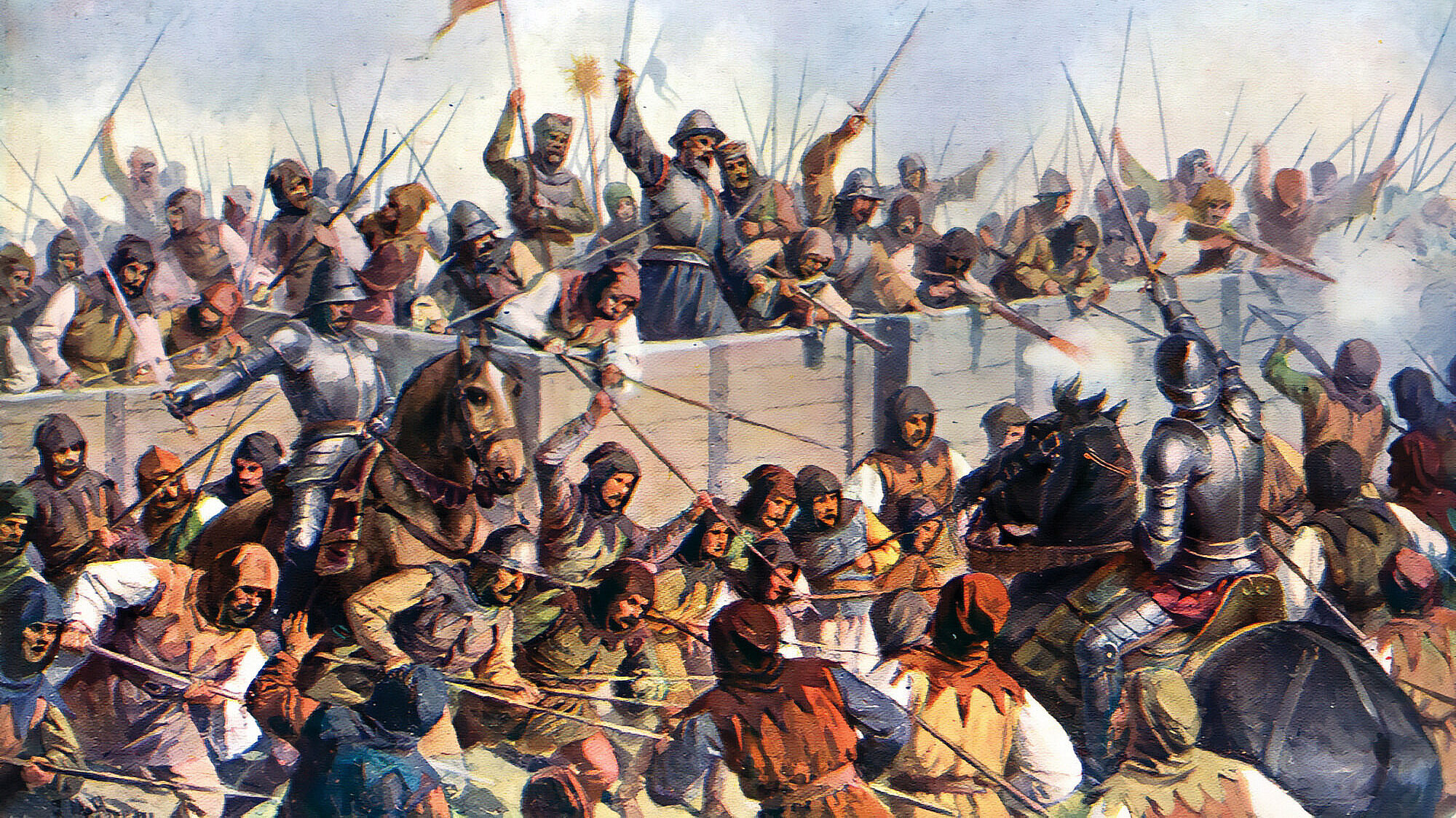Almost from the time it was completed in 1850, Emanuel Leutze’s famous painting, Washington Crossing the Delaware, has attracted more than its share of artistic detractors. These critics have pointed out various mistakes the painter made in the historical details, from depicting the wrong types of flag and boat to placing the late-night crossing in broad daylight. As Pulitzer Prize-winning author David Hackett Fischer has said, “The debunkers were right about some of the details in the painting, but they were wrong about others. The larger ideas in Emanuel Leutze’s art are true to the history that inspired it.”
Leutze, a native of Wurttemberg, Germany, came to America in 1825 with his revolutionary father, Gottlieb, who had been taken part in a failed attempt to depose the Russian-born king of his city-state. After his father’s death, Leutze returned to Germany to study art, and soon became embroiled in the revolutionary spirit that was sweeping Europe in the late 1840s. The Forty-Eighters, as they were called, instigated popular uprisings in Germany, France, and other European countries, but all were put down brutally by those in power.
Leutze, disillusioned and demoralized, turned to the memory of a more successful revolution for inspiration. Recruiting American tourists and students to serve as models, he completed his giant painting, Washington Crossing the Delaware, at his studio in Dusseldorf in 1850. The work was 12 feet, 5 inches high and 21 feet, 3 inches wide, and showed George Washington and his men making their dramatic crossing of the icy Delaware River above Trenton, New Jersey, on Christmas night, 1776.
A fire at his studio damaged the painting soon after it was completed, but Leutze repaired the work and displayed it widely across Europe, winning a gold medal in Berlin. The original became the property of the Bremen Art Museum. Leutze sent a stroke-by-stroke copy of the painting to America, where it was housed at the Metropolitan Museum of Art in New York City. (The original was destroyed by British bombers during World War II, a raid some have seen as a final act of retribution for the American Revolution.) During the Civil War it was displayed in the rotunda of the Capitol Building in Washington, D.C.
Critics were quick to point out that the flag being held by future president James Monroe in the painting did not come into being until 1777. Others have noted that Leutze failed to show the actual type of Durham boat used in the crossing, replacing it with a smaller, more precarious rowboat. Washington himself is shown as being a good deal older than the vigorous 44-year-old he was in 1776—more like the elderly, iconic figure he is in Gilbert Stuart’s equally famous painting. And the time, or at least the lighting, is wrong: the patriots made their crossing in near-total darkness, not the blue-white glow of Leutze’s painting.
But as Fischer points out, the artist was not attempting a photographic-quality image of the event, but a symbolic rendering of a historical moment that also encapsulated the entire perilous undertaking of the revolution. The 13 different types of men (and one woman) that Leutze places in the boat with Washington are emblematic of the various types of colonists who were making their stand against British imperialism. They include a New England seaman, a Scottish immigrant, an African-American, a woman wearing men’s clothing, western frontiersmen, northern farmers, a Baltimore merchant, and a Virginia aristocrat, James Monroe.
As the European artist Emanuel Leutze realized, the American colonists on the icy Delaware River that night were all in the same boat—literally and figuratively. By following the stalwart courage of George Washington, they managed to cross safely to the other side. Washington Crossing the Delaware may not be great history, but it is great art. n
Roy Morris Jr.




Join The Conversation
Comments
View All Comments